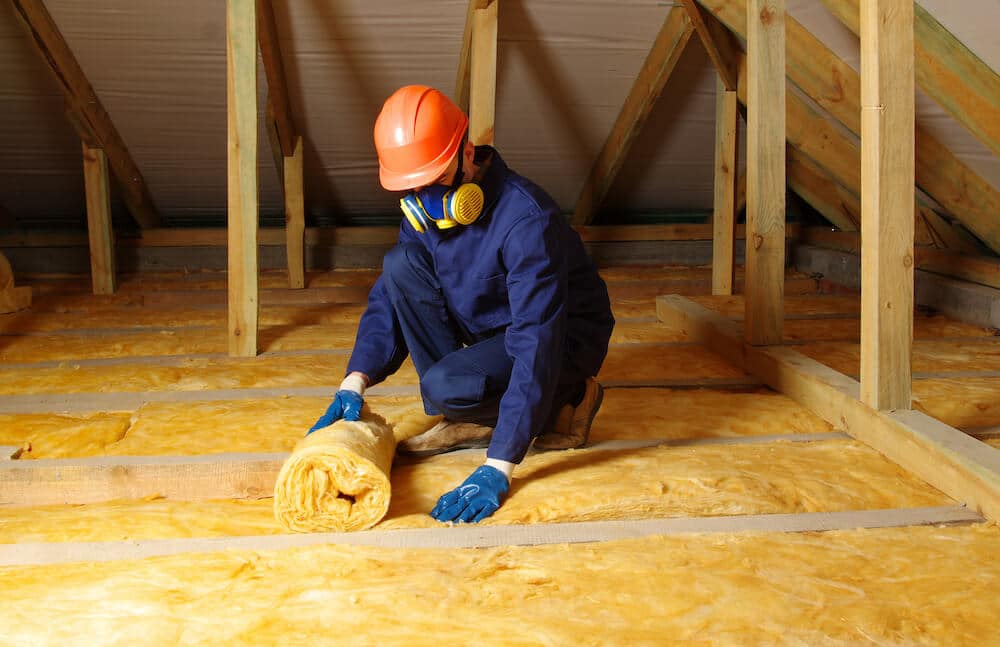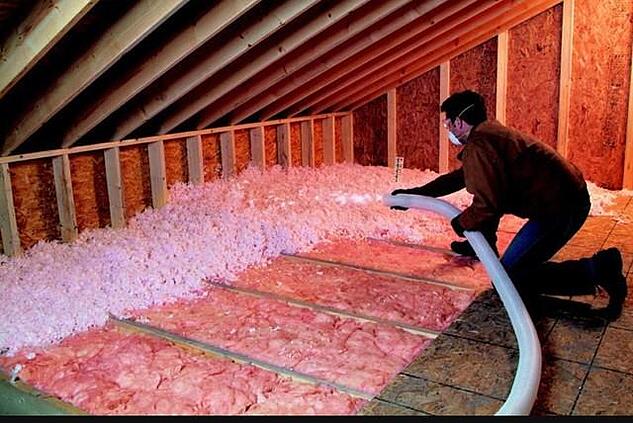Discover the Different Types of Attic Insulation and Their Special Benefits for Your Home's Energy Efficiency

Fiberglass Insulation
Fiberglass insulation is among the most commonly made use of materials for attic insulation as a result of its outstanding thermal performance and cost-effectiveness. Composed of tiny glass fibers, this material effectively catches air, producing a protecting barrier that aids maintain consistent indoor temperatures. Its high R-value per inch makes it especially reliable at withstanding heat transfer, which is vital for power preservation in homes.
Installation of fiberglass insulation is fairly uncomplicated, frequently offered in batts or loose-fill types, suiting different attic arrangements. In addition, it is non-combustible and immune to moisture, lowering the risk of mold development. This durability adds to its durability, making fiberglass a sensible lasting financial investment for house owners.
Additionally, fiberglass insulation is commonly made from recycled materials, which boosts its eco-friendliness. The material can additionally add to soundproofing, reducing noise transfer between spaces. While it is important to wear protective equipment throughout installment to avoid irritation from the fibers, the general advantages of fiberglass insulation, including power cost savings and environmental considerations, make it a popular selection for boosting attic performance and advertising a comfy living setting.
Spray Foam Insulation
Spray foam insulation is a very reliable alternative for attic room insulation, recognized for its premium air securing and thermal efficiency. This innovative insulation material is made up of a blend of isocyanate and polyol resin, which, when combined, increases quickly to fill up gaps and tooth cavities in the attic space. Its ability to comply with various surface areas makes certain a continual barrier against air leakages, considerably minimizing heat loss during cooler months and warm gain during warmer periods.
One of the essential benefits of spray foam insulation is its high R-value per inch, which means it offers outstanding thermal resistance in a relatively slim application. This is specifically useful in attics where space is commonly restricted. In addition, spray foam can assist minimize wetness accumulation, minimizing the risk of mold and mildew and mildew growth, which can be harmful to both the structure and interior air high quality.
While the preliminary expense of spray foam insulation may be greater than standard alternatives, its long-term energy financial savings, paired with enhanced comfort and improved home worth, make it a worthwhile financial investment for property owners looking for improved power effectiveness. Attic Insulation DFW. Overall, spray foam insulation stands out as an efficient solution for enhancing attic insulation
Cellulose Insulation

Cellulose insulation is a preferred selection for attic room insulation, largely made up of recycled paper products treated with fire retardants. This eco-friendly alternative is recognized for its superb thermal performance, successfully decreasing warmth transfer in both summertime and winter season. The thick structure of cellulose enables it to load gaps and gaps in attic room areas, giving a smooth barrier against air leaks.
One of the considerable benefits of cellulose insulation is its ability to resist mold and mildew and insects, owing to the fire resistant treatments used during production. Furthermore, it boasts a high R-value per inch, which translates into premium power effectiveness. Property owners can expect reduced cooling and heating prices as a result of enhanced insulation.
Installment is commonly achieved via blowing loose cellulose into the preferred location, allowing for a effective and quick procedure. This method likewise lessens disruption to the existing structure. Cellulose insulation has a relatively low ecological influence, as its manufacturing process utilizes recycled products, adding to lasting building methods.
Rock Woollen Insulation
Among the different alternatives for attic insulation, rock woollen, also recognized as mineral wool, stands apart due to its excellent thermal and acoustic performance. Made from recycled or natural materials, rock woollen is developed by thawing rock and rotating it into fibers, resulting in a product that supplies excellent insulation residential or commercial properties.
Among the considerable benefits of rock woollen insulation is its high R-value, which indicates its efficiency in standing up to heat flow. This particular not only enhances power effectiveness but additionally contributes to keeping a comfortable interior temperature level year-round. Furthermore, rock woollen is naturally fire-resistant, making it a more secure option for homes as it can endure heats without melting or releasing hazardous fumes.
Furthermore, rock woollen insulation masters soundproofing abilities, properly minimizing noise transmission between areas and from outside sources. This makes it an ideal selection for house owners seeking a tranquil living environment. Rock wool is moisture-resistant, helping to protect against mold and mildew growth and maintaining the structural honesty of the attic room space. On the whole, rock wool insulation supplies a detailed service for enhancing energy efficiency, safety and security, and comfort in property settings.
Glowing Barrier Insulation
Glowing barrier insulation functions as an effective solution for lessening warm transfer in attics, especially in warmer look here climates. This sort of insulation works by mirroring convected heat far from living spaces, thereby minimizing the quantity of warmth that enters a home during hot weather condition - Attic Insulation DFW. Usually made up of a very reflective product, such as light weight aluminum foil, radiant barriers are installed in attics, dealing with the roofing, where they can intercept incoming warm from the sunlight
The main benefit of radiant barrier insulation is its capability to lower cooling expenses. By showing warm as opposed to absorbing it, glowing barriers can assist preserve a much more secure interior temperature level, reducing the workload on air conditioning systems. This published here effectiveness translates into lower power bills and enhanced comfort for home owners.
In addition to energy financial savings, radiant barriers can likewise add to enhanced interior air quality. By minimizing warm build-up, they assist minimize moisture degrees, which can prevent mold and mildew growth and enhance general air blood circulation. When set up correctly, radiant obstacle insulation can be an important addition to any energy-efficient home, making it a worthwhile factor to consider for homeowners looking to enhance their attic room insulation technique.
Conclusion
In conclusion, comprehending the different kinds of attic insulation-- fiberglass, spray foam, cellulose, rock wool, and glowing obstacles-- makes it possible for homeowners to make informed choices relating to energy performance. Each insulation kind provides special advantages, such as premium thermal resistance, wetness management, and audio attenuation. By selecting the proper insulation product, considerable reductions in energy costs can be over at this website attained, together with enhancements in interior comfort. Ultimately, the ideal option adds to an extra sustainable living atmosphere and promotes overall energy preservation.

In final thought, understanding the different kinds of attic room insulation-- fiberglass, spray foam, cellulose, rock woollen, and glowing obstacles-- makes it possible for house owners to make enlightened choices concerning power performance.